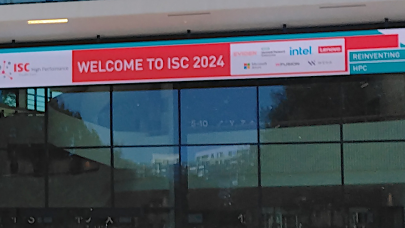The undisputed theme in this week’s HPC news cycle has revolved around bringing supercomputing tech to the midmarket, with announcements from the likes of Cray, which is scaling down one of its high-end systems to put it in the hands of the ever-elusive “missing middle” of potential users.
 Add to the list of step-downs to the mid-range, Lustre-based storage company, Xyratex, which today announced a pared down version of its ClusterStor offering targeted at departmental-level HPC.
Add to the list of step-downs to the mid-range, Lustre-based storage company, Xyratex, which today announced a pared down version of its ClusterStor offering targeted at departmental-level HPC.
The ClusterStor 1500 is targeted at mid-range users with a fully integrated Lustre-based solution that Xyratex says will help puddle-jump acquisition hassles. The goal is to let time and TCO-conscious mini-HPC’ers scale linearly and free themselves from the limitations of NFS-based approaches.
We talked with Xyratex’s Senior VP of the ClusterStor line, Ken Claffey, who told us that there’s real value in the emerging market of smaller-scale HPC shops that have powerful x86 systems at their disposal. They are the most likely to face increasing bottlenecks with the current storage and file system rigs, but the least equipped to bring the expertise to uncork those problems.
Claffey admits that in the past, getting these “departmental” level users to take a shine to Lustre would have been a challenge, but he says that it’s mature, stable and has been thoroughly validated to work stably at a terabyte per second. He pointed to the recent successes of the file system’s ability to float on the flood of Blue Waters as proof, noting that this mid-market approach is the same system scaled down to fit into smaller budgets and talent pools. He notes that while in the past, smaller-scale simulation users might have been wary of Lustre’s appeal, current performance possibilities on the horizon are making it harder to ignore.
Again, it all boils down to a matter of priorities for these shops—a gigabyte per second would be fantastic, but at what cost if they were to just roll their own versus tear into a pre-packaged performance present with a Lustreous bow?
Xyratex is filing this market under a loose categorization of x86 boxes ranking in the 16 to 128 node range. This is a rather wide swath of users who, according to Claffey, have been pushing the limits of mainstream, simple NFS-based approaches on time-critical simulations. The problem is, the performance-enhanced alternative of using a parallel file system (Lustre, GPFS, etc) requires a host of integration, hardware purchase, and other steps on the RAID and metadata side, in addition to expertise and ongoing maintenance and management. This leads to a rather high TCO and a subsequent demand from users to deliver a pre-packaged set that just gets the job done without the piecemeal hacking and stacking.
As Claffey explained, at the midrange level, users face a major challenge when it comes to building their own storage systems, especially when they need to keep up with performance possibilities in the face of actual time-to-market demands. Their storage systems need to be scalable on the backend to deliver the kind of I/O performance that’s waiting in the wings for the right configuration. “Many of these users are just concerned with getting their problem solved—they don’t want a complex storage infrastructure and can’t hire PhDs to get them running. Further, they don’t have weeks or months to built it—they need something off the shelf that can be quickly integrated.”
“Architecturally, it’s easy to scale out a cluster on the compute side, but when users want to scale the performance of their applications, it’s not possible with NFS because one can’t add new nodes in a single name space. With Lustre, you can linearly scale by adding more storage nodes at the backend and thus you can scale x86-based storage capability so that you’re left with a balanced and optimized system.”
More specifically, instead of buying independent servers, HA RAID subsystems and then cobbling it together on the file system, operating system, data protection and other software fronts, users can look a tight 2U or 4U package for less hardware and software hassles. Again, not a new concept by any means—but it might signal bigger things for Lustre’s adoption in the wake of this growing subset of HPC users.
All of the mid-market push to bring Lustre to new groups overlaps with the roadmap Xyratex is driving along with OpenSFS, EOFS and other groups who are pushing adoption and expansion of the file system.
 For the curious, here are some specs on the new offering—
For the curious, here are some specs on the new offering—
- Architecture that blends server, network and storage platforms, which used to have their own separate software layers into a single integrated, modular, scale-out storage building block. The goal is to open both performance and capacity while reducing administrative overhead.
- The reported ability to scale performance from 1.25GB/s to 110GB/s and raw capacity from 42TB to 7.3PB.
- Xyratex says this is about deployment in hours, not weeks, allowing users to be productive and realize the value from their investment immediately.
- Support, including assistance with setup, installation and performance optimization.
- ClusterStor Manager, which consolidates management of the entire storage cluster infrastructure, RAID data protection layer, operating system and Lustre into a single UI.
Related Articles
How to Deploy Storage to Better Compete in Today’s Economy
New OpenSFS Rep on the Future of Lustre

























































